Greenland is a Danish region, having been given home autonomy by Denmark in 1979. Since the Inuit make up the majority of the population, their cultural practices and beliefs predominate in Greenland. The remainder of the population, who belong to the Lutheran Church, comprises Norse colonists’ offspring. As a result, it combines Scandinavian and traditional Inuit customs.
The population of Nuuk, the capital city, is 17,000 people. Icebergs and glaciers are thus a major feature of this nation and add to its ethereal beauty. The many immigrant groups that call Greenland home possess extraordinary skills that enable them to endure the region’s peculiar temperatures. Your trip to Greenland will be rewarding because of the many attractions this nation has to offer.
Ilulissat Icefjord

The Ilulissat Icefjord designated a UNESCO World Heritage Site in 2004, extends 40 km from the Greenland ice sheet to Disko Bay. At the eastern end of this fjord is Jakobshavn Isbrae, the Northern Hemisphere’s most producing glacier. Each year, icebergs that have melted are passed out of the fjord at a rate of around 20 billion tonnes.
Disko bay
This bay, which is located on the western coast of Greenland, is significant historically since it was here that Erik the Red, a Norse adventurer, established his first colony in 985 AD. However, it is believed that the Inuits first came into contact with Disko Bay much earlier than 2400 BC.
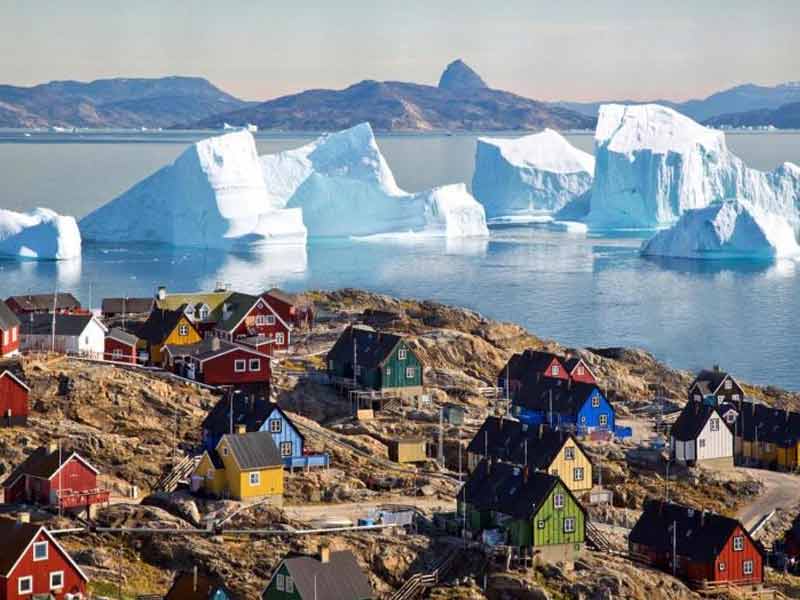
A variety of marine life, including benthic and pelagic species, may survive there thanks to the nutrient-rich waters. You could even have a chance to see bowhead, humpback, killer, and narwhal whales in the spring.
It is also the location where you may see migratory species including harp, bearded, ringed, and hooded seals as well as gulls, kittiwakes, cormorants, and eider ducks. The trips would either last three hours or a whole day.
Knud Rasmussen
This museum honours the memories and accomplishments of the Danish explorer Knud Rasmussen and is situated in Ilulissat, the site where he was born and one of the most well-known tourist destinations in Greenland. Rasmussen also spent time there to focus on his work and enjoy the peaceful tranquilly the location provided, away from the bustle of the city.
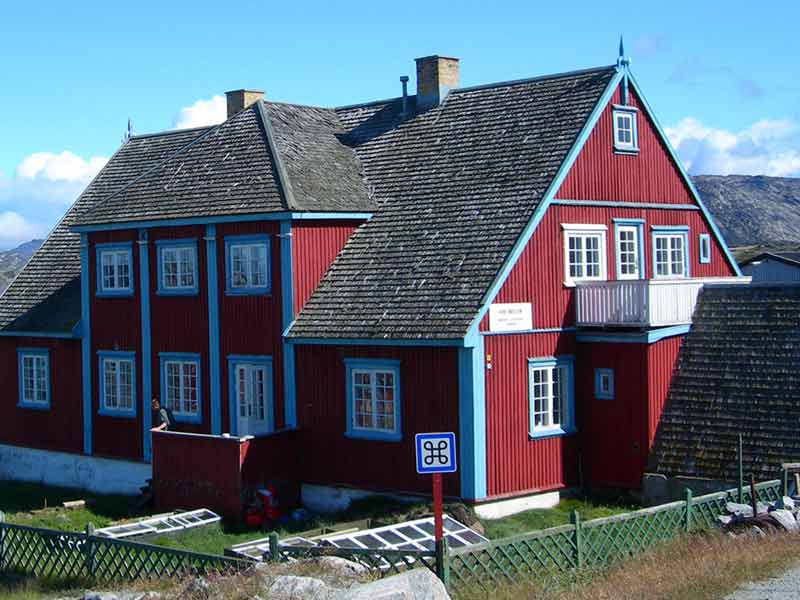
Helge Bojsen-Mller, the architect who designed the structure in 1917, was influenced by the design of English cottages. On a hilltop above the home, a Memorial Cairn was erected in Rasmussen’s memory after collecting stones from many locations.
The Greenland Ice Sheet
The Greenland Ice Sheet is the second biggest ice sheet in the world, measuring approximately 2,000,000 cubic kilometres. Antarctica is the largest. Sea levels would rise by a terrifying 7 metres if this enormous area completely melted!

This one will undoubtedly cause you to shiver. To fully appreciate the ice’s alluring beauty, you may either walk on it in Kangerlussuaq or take a helicopter ride to get a birds-eye perspective of the sheet. As one of the intriguing locations to see in Greenland, you must include this on your list.
Katuaq
Katuaq, which was created by Schmidt Hammer Lassen, is among the best sites to visit in Greenland. This L-shaped building is modernist in design. There are two auditoria in it. The larger auditorium, which can accommodate over a thousand people, is used to screen films or plays, conduct concerts and host conferences. The smaller auditorium has a seating capacity of 508.
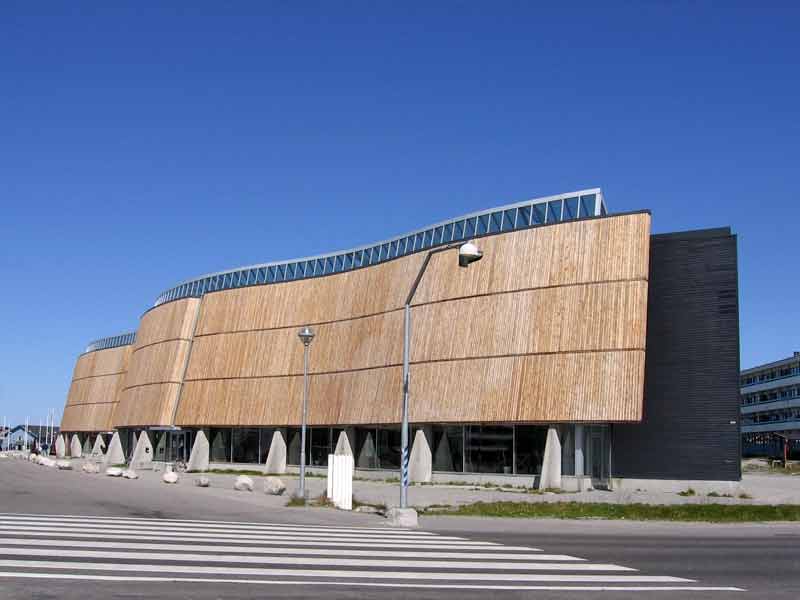
The structure features a screen that faces Nuuk’s centre area and leans backwards like the Northern Lights. It has larch wood on both sides and is elevated above the ground. In 1997, the Greenland Home Rule Government, the Nordic Council of Ministers, and the Nuuk Municipal Centre collaborated to build it.
Also read: Lofoten Islands of Norway: An Excellent Beauty of Norway
Nuuk Cathedral
This church, which was dedicated in 1849, is a well-known location where the majority of the community congregates to celebrate holidays like National Day. This edifice is extremely plain but charming because of its characteristic red colouring and spire.
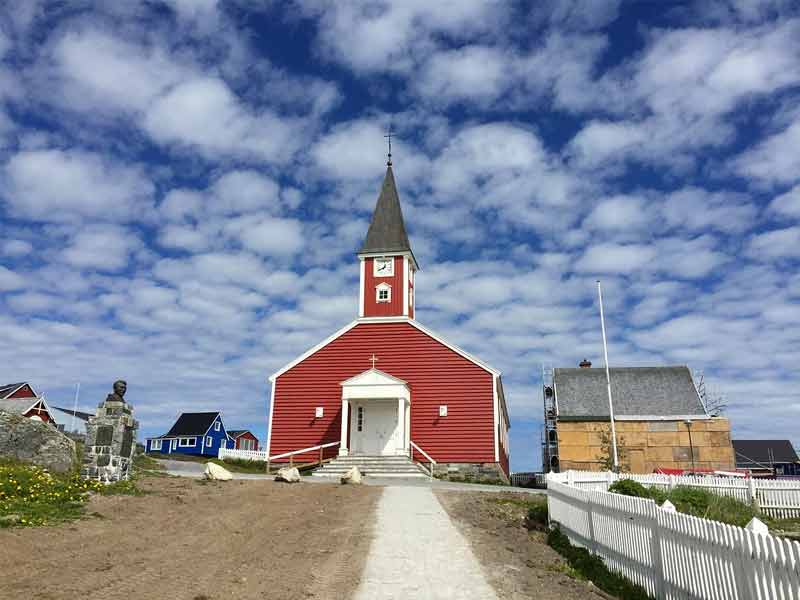
The monument of Hans Egede on the hill above the church and the bronze statue of organist Jonathan Petersen in front of the cathedral are also well-known sights. As a result, the church represents the country’s small but significant Lutheran population.
Greenland National Museum and Archives
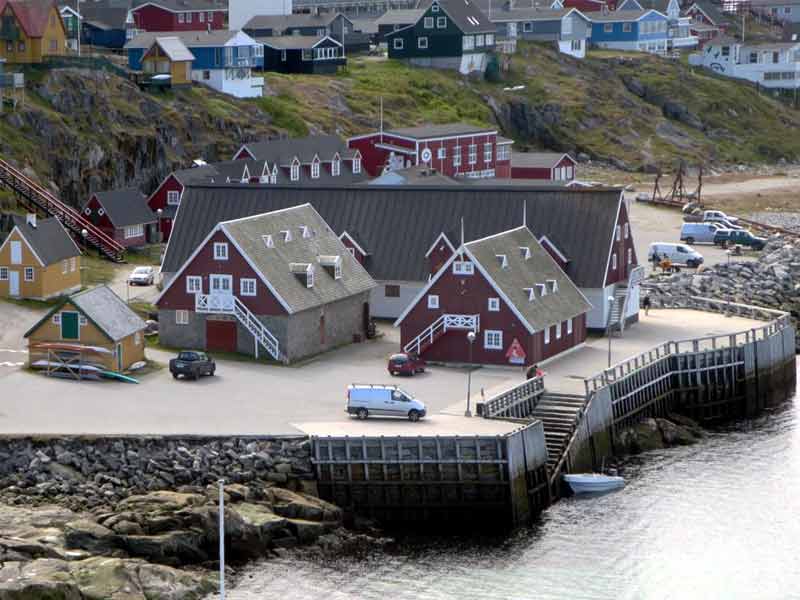
One of Greenland’s first museums, the Greenland National Museum and Archives was constructed in the middle of the 1960s. It also has room for the nearby Cooper’s workshop and an exhibit of blubber vats. The mummies of three ladies and a six-month-old baby discovered in Qilakitsoq are the primary draws of the site. One of the most popular tourist destinations in Greenland is the National Museum and Archives of Greenland. It also offers insight into ruins, structures, and more. It also includes various other archaeological artefacts on exhibit, such as tools that have been excavated. Additionally, it offers details on anthropological phenomena.




























